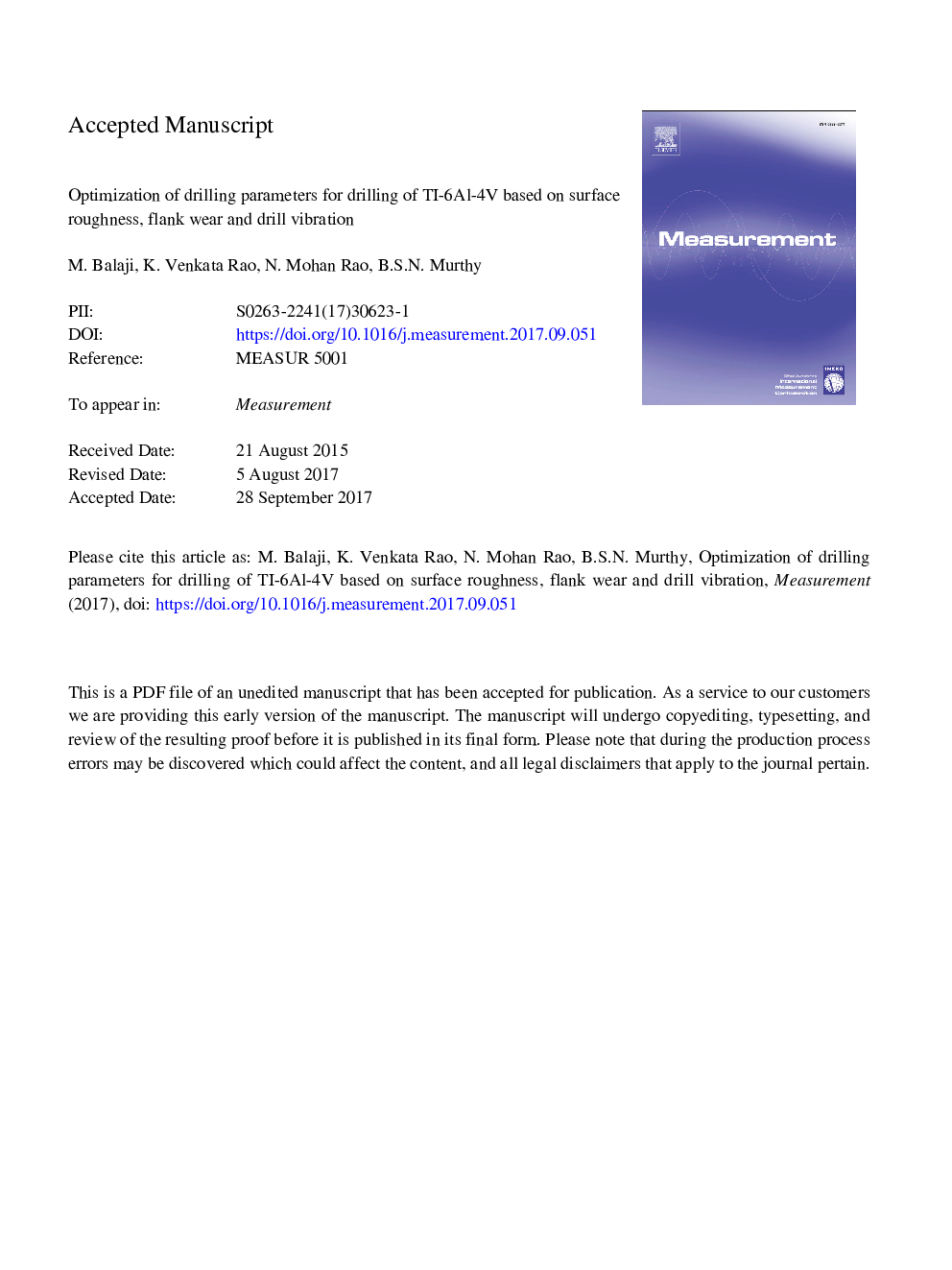| Article ID | Journal | Published Year | Pages | File Type |
|---|---|---|---|---|
| 5006327 | Measurement | 2018 | 19 Pages |
Abstract
Machining of titanium alloys is difficult due to their low elasticity, high formability and tendency of breakage. In drilling of TI-6Al-4V alloy, drill bits are subjected to chatter vibration and it causes poor surface finish and tool failure. In this study, effect of drilling parameters such as spindle speed, helix angle and feed rate on surface roughness, flank wear and acceleration of drill vibration velocity was investigated using Response Surface Methodology. A Laser Doppler Vibrometer (LDV) was used to measure vibration of drill bit in the form of Acousto Optic Emission (AOE) signal. And these signals were transformed into time domain with different time frequency zones using a high speed fast Fourier transformer. Experimental data were analyzed using Response Surface Methodology (RSM) to identify significant parameters on surface roughness, flank wear and acceleration of drill vibration velocity. A multi response optimization was performed to optimize drilling parameters for minimum surface roughness, flank wear and acceleration of drill vibration velocity. Optimum cutting parameters were found as 26.16 degrees of helix angle, 10.0 mm/min of feed rate and 600rpm of spindle speed.
Related Topics
Physical Sciences and Engineering
Engineering
Control and Systems Engineering
Authors
M. Balaji, K. Venkata Rao, N. Mohan Rao, B.S.N. Murthy,
